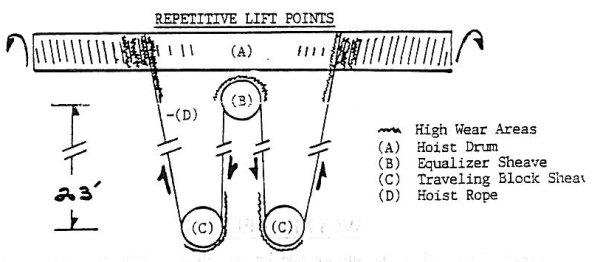For bridge crane lifting applications in which the traveling block is at the same height off the floor at the beginning of repetitive lifts, there are specific areas that should be inspected on the body of the hoist rope.
As the load is initially lifted, the drum rotates causing the rope to travel through sheaves and enter the drum, while at the same time, the wire rope is stretching (more in new rope, less in old rope). Once the load is released, the rope relaxes and reverses the direction of travel in the sheaves and also is in contact with the sheave or drum, there occurs a "filing" action. Also, we find this filing effect where the hoist rope is saddled over an equalizer sheave. Each time a load is introduced and released, the same filing action occurs. These high-wear areas deserve special attention during your inspection of repetitive lift hoist systems. You can learn how to conduct these inspections with ITI's rigging gear inspector training options.

This is the workshop from The Professional Rigger newsletter, circa 1986.



COMMENTS